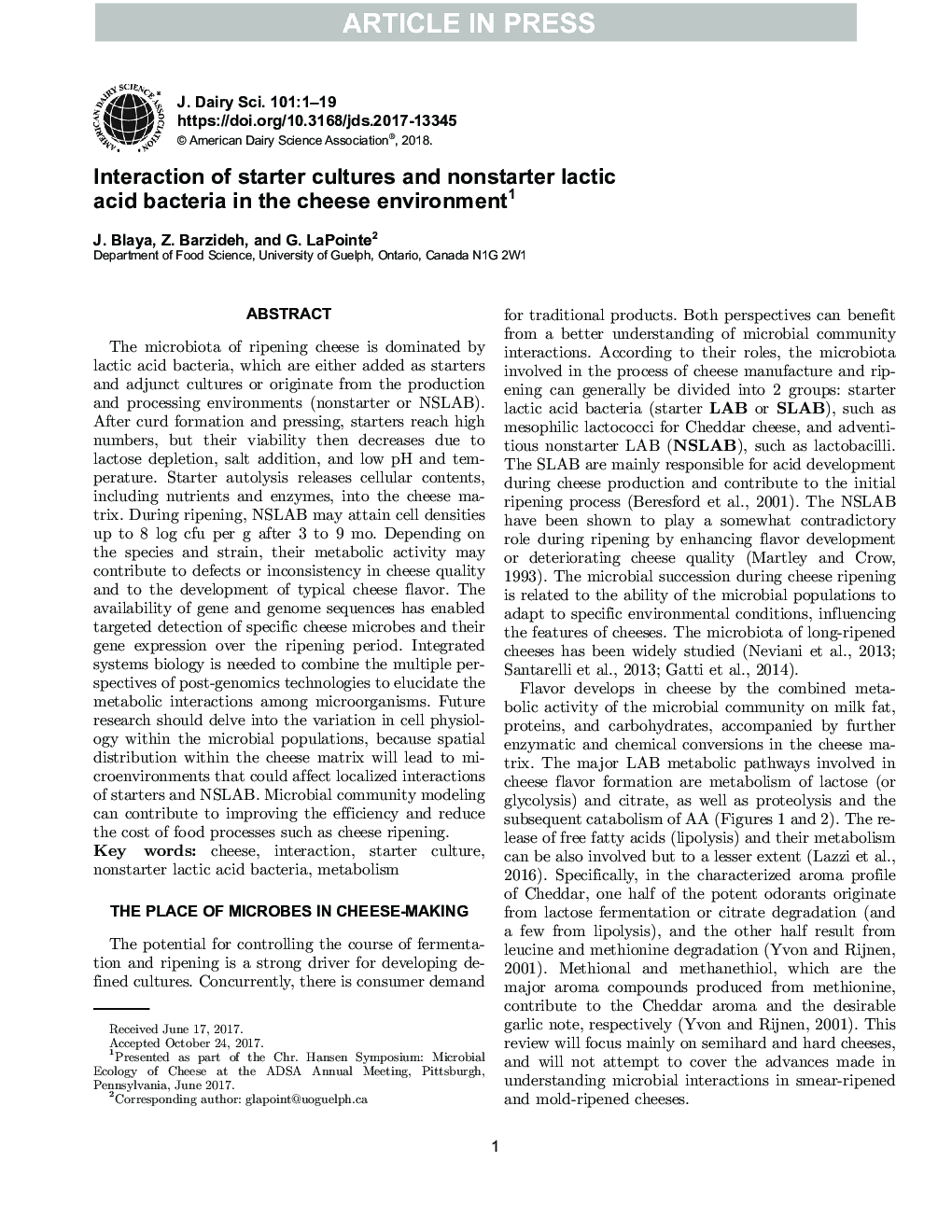| کد مقاله | کد نشریه | سال انتشار | مقاله انگلیسی | نسخه تمام متن |
|---|---|---|---|---|
| 8501528 | 1553841 | 2018 | 19 صفحه PDF | دانلود رایگان |
عنوان انگلیسی مقاله ISI
Symposium review: Interaction of starter cultures and nonstarter lactic acid bacteria in the cheese environment1
ترجمه فارسی عنوان
بررسی سمپوزیوم: تعامل فرهنگ های استارتر و باکتری های اسید لاکتیک غیرطبیعی در محیط پنیر 1
دانلود مقاله + سفارش ترجمه
دانلود مقاله ISI انگلیسی
رایگان برای ایرانیان
کلمات کلیدی
پنیر، اثر متقابل، فرهنگ استارت باکتری های اسید لاکتیک غیر استروئیدهای، متابولیسم
موضوعات مرتبط
علوم زیستی و بیوفناوری
علوم کشاورزی و بیولوژیک
علوم دامی و جانورشناسی
چکیده انگلیسی
The microbiota of ripening cheese is dominated by lactic acid bacteria, which are either added as starters and adjunct cultures or originate from the production and processing environments (nonstarter or NSLAB). After curd formation and pressing, starters reach high numbers, but their viability then decreases due to lactose depletion, salt addition, and low pH and temperature. Starter autolysis releases cellular contents, including nutrients and enzymes, into the cheese matrix. During ripening, NSLAB may attain cell densities up to 8 log cfu per g after 3 to 9 mo. Depending on the species and strain, their metabolic activity may contribute to defects or inconsistency in cheese quality and to the development of typical cheese flavor. The availability of gene and genome sequences has enabled targeted detection of specific cheese microbes and their gene expression over the ripening period. Integrated systems biology is needed to combine the multiple perspectives of post-genomics technologies to elucidate the metabolic interactions among microorganisms. Future research should delve into the variation in cell physiology within the microbial populations, because spatial distribution within the cheese matrix will lead to microenvironments that could affect localized interactions of starters and NSLAB. Microbial community modeling can contribute to improving the efficiency and reduce the cost of food processes such as cheese ripening.
ناشر
Database: Elsevier - ScienceDirect (ساینس دایرکت)
Journal: Journal of Dairy Science - Volume 101, Issue 4, April 2018, Pages 3611-3629
Journal: Journal of Dairy Science - Volume 101, Issue 4, April 2018, Pages 3611-3629
نویسندگان
J. Blaya, Z. Barzideh, G. LaPointe,
